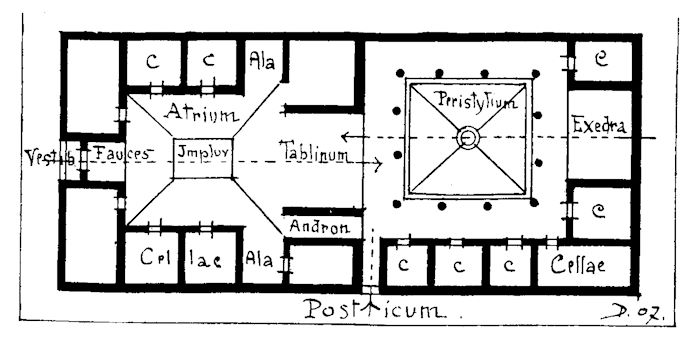Ephesians in their early years generally did not have apartments. Apartment type which was known as insula blocks, which were built due to the overpopulation explosion after the republican period, are mostly seen in Rome city itself and other big cities such as Ephesus. There were luxury and non-luxury apartments, where 90% of the people lived during the peak era of the city of Ephesus. Maybe the best example of these would be the Terrace Houses of Ephesus. The city life of Ephesus was very different and interesting compared to what we have today.

The way the ancient Ephesians lived was very different from ours today. We have apartments and we tend to live mostly in our flats, while Ephesians mostly lived outside.
The most popular lodging in Ephesus was the insula, which usually consisted of 4 floors, but could also go up to 6 or 7 floors at most. There were about 44000 insulas in the city, and due to a lack of engineering and strong materials, the governor of Ephesus forbade them to be built above a certain height.
Even though the structures were concrete, they were dangerous because they were not meeting the strength standards. There were frequent fires, collapses, and accidents. The reason for the fires is that people cook with an open fire in their rooms. Rooms and shops at road level were the most expensive and exclusive as they were the safest in case of fire.
Most of the writings which often mention insulae, refer to their dangers. There are numerous references to the dangers of living in the insulae in plays such as satires and histories. It seems that the main dangers of living in Roman apartments were fire and collapse. There have also been cases where buildings were deliberately demolished and residents were displaced.
These lodgings in Ephesus were small, with almost no furniture. A chest or two to store valuables and clothes, a few clothespins to hang used clothes, winter cloaks, and other things. They might also have a few stools, maybe a bed, a mattress on the floor, a brazier to heat the room in winter, or even a cooking bar.
Multi-room and multi-floor houses were only for the wealthy. For wealthy families, they could have several multi-room apartments on the first floor which gave them time to run away in case of fire. Even these multi-room apartments were not what we imagined, as they did not have bathrooms or kitchens. A corner of a side room or hallway could be used to prepare meals, but very little cooking was done in the house. And although their houses were richly decorated, even the very wealthy had little furniture and small rooms.
Ephesus Terrace Houses were actually more like bedrooms. The first thing they did when they woke up was to go to the public toilet to relieve themselves. The women used their urine in pots and the men used the special jars left out by the ammonia producers to collect urine. The collected Urine was used to make ammonia.
After you eat a piece of bread dipped in very diluted wine for breakfast, you go to work. Shops and other businesses were open just after dawn until noon, the afternoon was usually free time. People used to visit the baths to bathe and chat with their friends.
You can also shave, have a massage, play games, and exercise in the baths and gymnasiums. Admission to the baths was so cheap even the slaves could afford it at least a few times a week, so the levels of personal hygiene in the city were pretty good.
With as little as one or two coins, you can use the sauna (caldarium), warm room (tepidarium), and cold water pool. A non-edible oil (often quite harsh for the poor, fragrant for the rich) and a strigil, a special scraper, was used for washing. Extra services, such as a barber or a masseur were a bit more expensive.
Some important men would visit the Forum after the Bath to take an active part in the city’s administration and later to listen to the news and talk about politics. At sunset, most people would return home for dinner and sleep.
Often people ate food purchased from the thermopolium (Street food vendors), which served a variety of cooked food alongside wine. Families would buy their meals, eat it at the facility or bring it home and share it with the family. Food included porridge, bread, vegetables both raw and cooked, eggs, fresh curd cheese, and sometimes fish and meat. Food was taken once a day, eaten hot at noon. Leftovers would be heated on the barbecue for dinner, which included more bread, cheese, eggs, and olives.
So basically, the ancient Romans used their cities the same way we used our apartments. They slept in their homes, went to the toilet, washed, had lunch, and socialized in public spaces outside the home.